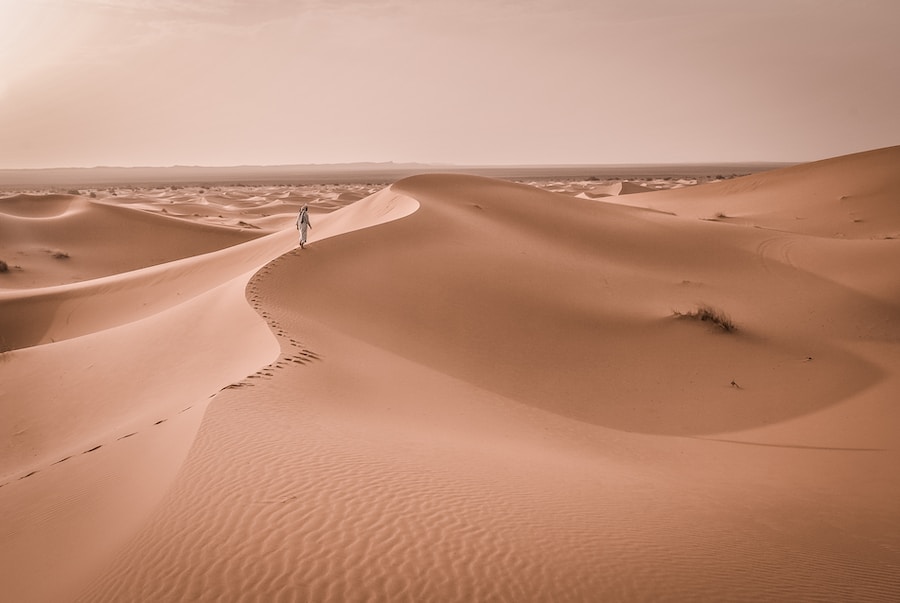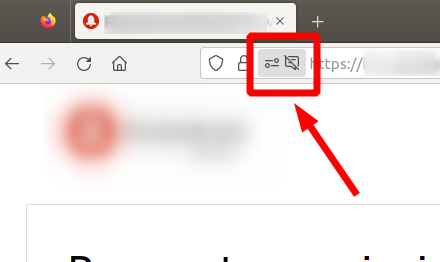
Why January is the Perfect Time to Visit Morocco: A Weather Guide
Introduction: The Magic of Morocco in January
Morocco is a captivating travel destination that offers a unique blend of ancient traditions, vibrant culture, and stunning landscapes. From the bustling markets of Marrakech to the serene beaches of Essaouira, there is something for every type of traveler to enjoy. While Morocco is a popular destination year-round, visiting in January has its own special charm. In this article, we will explore the benefits of visiting Morocco in January and why it is the perfect time to experience the magic of this North African country.
Mild Temperatures and Comfortable Climate
One of the main benefits of visiting Morocco in January is the mild temperatures and comfortable climate. While many other winter destinations are covered in snow and freezing temperatures, Morocco offers a pleasant escape from the cold. The average temperatures in Morocco during January range from 10°C to 20°C (50°F to 68°F), making it an ideal destination for those seeking a break from harsh winter weather.
Compared to other winter destinations, such as Europe or North America, Morocco's mild temperatures allow for a wide range of outdoor activities. Whether you want to explore the bustling streets of Marrakech, hike in the Atlas Mountains, or relax on the beaches of Essaouira, you can do so comfortably without having to bundle up in layers of winter clothing.
Escape the Cold and Enjoy the Sunshine
In addition to mild temperatures, another benefit of visiting Morocco in January is the abundance of sunshine and warmth. During the winter months, many people experience a lack of sunlight and vitamin D, which can have negative effects on mental health and well-being. By visiting Morocco in January, you can escape the cold and gloomy weather and soak up some much-needed sunshine.
The warmth and sunshine in Morocco during January can have a positive impact on your mental health and well-being. Sunlight has been proven to boost mood, increase serotonin levels, and improve overall mental health. So, if you're feeling the winter blues, a trip to Morocco in January might be just what you need to lift your spirits.
Furthermore, the sunny weather in Morocco during January provides ample opportunities for outdoor activities. Whether you want to explore the vibrant cities, hike in the mountains, or relax on the beaches, you can do so under clear blue skies and warm temperatures.
Exploring the Vibrant Cities of Morocco
Morocco is home to several vibrant cities that are worth exploring. From the bustling streets of Marrakech to the coastal charm of Essaouira, each city offers its own unique culture and attractions. Visiting these cities in January has its own benefits, as it is considered the off-season for tourism.
Marrakech is one of the most popular cities to visit in Morocco. Known for its vibrant markets, stunning palaces, and lively atmosphere, Marrakech offers a sensory overload of sights, sounds, and smells. In January, you can explore the city's famous medina without having to navigate through large crowds of tourists. You can also visit iconic landmarks such as the Bahia Palace and the Koutoubia Mosque without having to wait in long queues.
Another city worth visiting in Morocco is Fes. Known for its well-preserved medieval architecture and ancient medina, Fes offers a glimpse into Morocco's rich history and culture. In January, you can wander through the narrow alleyways of the medina and admire the intricate tilework and traditional craftsmanship without feeling overwhelmed by crowds.
Essaouira is a coastal city that offers a more relaxed and laid-back atmosphere compared to Marrakech and Fes. With its charming blue-and-white buildings, sandy beaches, and fresh seafood, Essaouira is a perfect place to unwind and enjoy the coastal beauty of Morocco. In January, you can stroll along the beach, watch the sunset over the Atlantic Ocean, and explore the city's vibrant art scene without having to compete for space with other tourists.
Discovering the Rich Culture and History of Morocco
Morocco has a rich and diverse cultural heritage that is influenced by Arab, Berber, and European traditions. From ancient Roman ruins to Islamic architecture, there are countless opportunities to immerse yourself in Morocco's history and culture. Visiting Morocco in January allows you to discover this rich heritage without having to contend with large crowds of tourists.
One of the best ways to experience Morocco's culture is through its food. Moroccan cuisine is known for its bold flavors, aromatic spices, and unique combinations of sweet and savory. In January, you can indulge in traditional dishes such as tagine, couscous, and pastilla without having to wait for a table at popular restaurants.
In addition to food, Morocco offers a wide range of cultural experiences and learning opportunities. You can visit historic sites such as the Roman ruins of Volubilis, explore the traditional Berber villages in the Atlas Mountains, or learn about Islamic art and architecture in the cities of Fes and Marrakech. By visiting in January, you can take your time to fully appreciate these cultural experiences without feeling rushed or overwhelmed by crowds.
Experience the Desert in Mild Temperatures
No trip to Morocco is complete without a visit to the Sahara Desert. With its vast sand dunes, starry nights, and camel treks, the desert offers a truly magical experience. While summer temperatures in the desert can reach scorching highs, visiting in January allows you to experience the desert in mild temperatures.
The average temperatures in the Sahara Desert during January range from 10°C to 20°C (50°F to 68°F), making it much more comfortable for outdoor activities such as camel rides and stargazing. You can spend the night in a traditional desert camp, watch the sunset over the dunes, and marvel at the clear night sky without having to worry about extreme heat or cold.
In addition to camel rides and stargazing, there are other activities you can enjoy in the desert during January. You can try sandboarding down the dunes, take a 4x4 off-road adventure, or simply relax and enjoy the tranquility of the desert. By visiting in January, you can experience the beauty of the Sahara Desert without having to endure extreme temperatures.
Hiking in the Atlas Mountains
For outdoor enthusiasts and nature lovers, the Atlas Mountains offer a wide range of hiking opportunities. Stretching across Morocco, Algeria, and Tunisia, the Atlas Mountains are home to stunning landscapes, remote villages, and challenging hiking trails. Visiting the Atlas Mountains in January has its own benefits, as it is considered the off-season for hiking.
The Atlas Mountains offer a variety of hiking trails suitable for all levels of experience. From gentle walks through picturesque valleys to challenging treks up steep mountain peaks, there is something for everyone to enjoy. In January, you can hike in mild temperatures without having to worry about extreme heat or cold.
One of the main benefits of visiting the Atlas Mountains in January is the lack of crowds. During peak season, popular hiking trails can become crowded with tourists, making it difficult to fully appreciate the natural beauty of the mountains. By visiting in January, you can hike in peace and solitude, allowing you to connect with nature and enjoy the serenity of the mountains.
When hiking in the Atlas Mountains in January, it is important to come prepared. Make sure to pack warm clothing, sturdy hiking boots, and plenty of water. It is also advisable to hire a local guide who can provide valuable insights into the region's flora, fauna, and cultural heritage.
Enjoying the Beaches of Morocco in January
Morocco is blessed with a stunning coastline that stretches for over 1,800 kilometers (1,100 miles). From the rugged cliffs of the Atlantic coast to the golden sands of the Mediterranean, there are plenty of beautiful beaches to explore. Visiting Morocco's beaches in January has its own benefits, as it is considered the off-season for beach tourism.
One of the main benefits of visiting Morocco's beaches in January is the lack of crowds. During peak season, popular beach towns such as Agadir and Essaouira can become crowded with tourists, making it difficult to find a quiet spot to relax. By visiting in January, you can enjoy the beaches in peace and tranquility, allowing you to fully unwind and recharge.
In addition to fewer crowds, visiting Morocco's beaches in January also means cooler temperatures. While swimming might not be ideal during this time of year, you can still enjoy beach activities such as surfing, kiteboarding, and horseback riding. The Atlantic coast in particular offers excellent conditions for surfing, with consistent waves and uncrowded breaks.
Festivals and Celebrations in January
Morocco is known for its vibrant festivals and celebrations that showcase the country's rich cultural heritage. Visiting Morocco in January allows you to experience these festivals and celebrations without having to compete with large crowds of tourists.
One of the most popular festivals in Morocco is the Imilchil Marriage Festival, also known as "The Festival of Brides." Held in the High Atlas Mountains, this unique festival celebrates love and marriage. It is a traditional Berber event where young men and women from different tribes come together to find their life partners. The festival features traditional music, dancing, and colorful ceremonies that offer a fascinating insight into Berber culture.
Another festival worth experiencing in January is the Almond Blossom Festival in Tafraoute. Located in the Anti-Atlas Mountains, Tafraoute is known for its almond orchards that bloom in January. The festival celebrates the arrival of spring and the beauty of the almond blossoms. It features traditional music, dance performances, and a market where you can buy local handicrafts and almond products.
Attending these festivals and celebrations in January allows you to immerse yourself in Moroccan culture and traditions. You can witness traditional ceremonies, taste authentic Moroccan cuisine, and interact with locals who are proud to share their heritage with visitors.
Lower Prices and Fewer Crowds
One of the main advantages of visiting Morocco in January is the lower prices and fewer crowds. As it is considered the off-season for tourism, many hotels, restaurants, and tour operators offer discounted rates during this time of year. This means that you can enjoy a more affordable trip to Morocco without compromising on quality or experiences.
In addition to lower prices, visiting Morocco in January also means fewer crowds. Popular tourist attractions such as the medinas of Marrakech and Fes can become overcrowded during peak season, making it difficult to fully appreciate their beauty. By visiting in January, you can explore these attractions at your own pace and without having to navigate through large crowds of tourists.
To take advantage of lower prices and fewer crowds, it is advisable to book your accommodation and activities in advance. This will ensure that you secure the best deals and availability. It is also worth considering traveling during weekdays rather than weekends, as this can further reduce costs and crowds.
Tips for Packing and Preparing for a January Trip to Morocco
When packing for a trip to Morocco in January, it is important to consider the mild winter weather. While temperatures are generally mild during the day, they can drop significantly at night, especially in the desert and mountain regions. Therefore, it is advisable to pack layers of clothing that can be easily added or removed depending on the temperature.
Here are some essential items to pack for a January trip to Morocco:
- Warm clothing: Pack a mix of lightweight sweaters, long-sleeved shirts, and trousers that can be layered for warmth. A lightweight jacket or coat is also recommended for cooler evenings.
- Comfortable shoes: Morocco's cities and attractions often involve a lot of walking, so it is important to pack comfortable shoes. Opt for closed-toe shoes that provide support and protection.
- Sun protection: Despite the mild temperatures, the sun can still be strong in Morocco during January. Pack sunscreen, sunglasses, and a hat to protect yourself from the sun's rays.
- Travel adapter: Morocco uses European-style plugs, so make sure to pack a travel adapter if your devices have different plug types.
- Medications and toiletries: Pack any necessary medications, as well as toiletries such as hand sanitizer, wet wipes, and tissues. It is also advisable to bring a basic first aid kit with essentials such as band-aids and pain relievers.
When preparing for a trip to Morocco, it is also important to familiarize yourself with the local customs and cultural differences. Morocco is a predominantly Muslim country, so it is important to dress modestly and respect local customs. Women should cover their shoulders and knees when visiting religious sites or conservative areas. It is also customary to remove your shoes when entering someone's home or a mosque.
To stay safe and healthy while traveling in Morocco, it is advisable to drink bottled water, avoid street food that may not be properly cooked or washed, and practice good hygiene by washing your hands regularly. It is also recommended to have travel insurance that covers medical expenses and emergency evacuation.
Conclusion: Why January is the Best Time to Visit Morocco
In conclusion, visiting Morocco in January offers a unique opportunity to experience the magic of this North African country without having to contend with large crowds of tourists. The mild temperatures and comfortable climate make it an ideal destination for outdoor activities such as hiking, camel riding, and beach exploration. The abundance of sunshine and warmth can have a positive impact on mental health and well-being, providing a much-needed break from the cold and gloomy winter weather.
Exploring the vibrant cities of Morocco allows you to immerse yourself in the country's rich culture and history. From the bustling markets of Marrakech to the ancient medina of Fes, each city offers its own unique attractions and experiences. Visiting during the off-season allows you to fully appreciate these cities without feeling overwhelmed by crowds.
Whether you want to experience the beauty of the Sahara Desert, hike in the Atlas Mountains, or relax on the beaches, visiting Morocco in January offers a range of opportunities. The mild temperatures make it comfortable for outdoor activities, while the lack of crowds allows for a more peaceful and authentic experience.
In addition to the natural beauty and outdoor activities, January is also a great time to experience Morocco's festivals and celebrations. From traditional Berber weddings to almond blossom festivals, there are plenty of cultural events to enjoy.
Finally, visiting Morocco in January offers the benefits of lower prices and fewer crowds. This allows you to enjoy a more affordable trip without compromising on quality or experiences.
So, if you're looking for an escape from the cold and a chance to experience a unique blend of culture, history, and natural beauty, consider visiting Morocco in January. It truly is the best time to experience the magic of this captivating country.
Related Articles:
- A Comprehensive Guide to Weather in Agadir by Month
- The Ultimate Agadir Guide: Discover the Jewel of Morocco
For those planning a trip to Morocco, don't forget to check out Agadir Flights for the best flight deals and our own Flight Deal Finder for comprehensive flight options. If you're looking for activities to indulge in while in Morocco, Find the best things to do in Agadir offers a plethora of choices.



